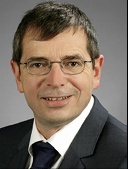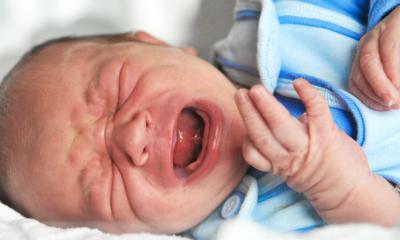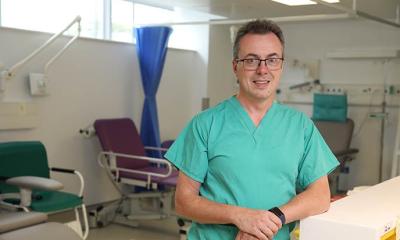The time machine
While the benefits of extracorporeal membrane oxygenation (ECMO) as a temporary respiratory support for adult patients are still debated, it is undisputed that for many infants ECMO is the only chance to survive, because it provides them with time to strengthen their lungs

If a baby’s lungs are not properly unfolded upon birth they can be supported mechanically for a few days, as Dr Robert Bartlett of Orange County Medical Centre in California (cf EH 2/13 p. 15) showed almost forty years ago. In extracorporeal membrane oxygenation (ECMO) the blood is drained from the body and pumped into an artificial system. In a membrane carbon dioxide is removed and oxygen is added before the blood is returned to the body (Fig. 1). Dr Bartlett was aware of the poor outcomes in adult patients: A national study had been discontinued after 92 patients, due to a mortality rate of 90% in both the ECMO and the control group.
Despite those results, he continued to use ECMO after his initial successful treatment of a neonate and he achieved survival rates of 75% in neonates and infants – clinically speaking quite a success, scientifically far from a validated procedure.
The problem was less of a technical one than an ethical one. How can a study with neonates be designed in which one group receives the treatment that needs to be validated, while the control group is refused this potentially life-saving procedure? Dr Bartlett went for a unique study design: ‘Play the winner’.
The first patient has a 50/50 chance to receive either ECMO or the conventional therapy. If the patient survives, the next patient receives a chance at ECMO and the rate would be 2:1. If this second patient dies the chance to receive ECMO treatment decreases to 1:2. The result was convincing: the first patient received ECMO and survived; the second patient received conventional treatment and died. The third patient now has a 3:1 chance to receive ECMO. The patient did receive ECMO and survived. The study was halted after twelve patients: eleven neonate patients had received ECMO and survived, only one patient – the second – had not received ECMO and had died [source: Pediatrics. 1985 Oct;76(4):479-87].
ECMO prevailed and today more than 50,000 ECMO therapies have been registered with Extracorporeal Life Support Organisation (ELSO) in Ann Arbor, Michigan, USA. Two thirds of these therapies were performed on neonates (Fig. 2). The types of lung failure that are being treated with this technology have different causes: hypoplasia, meconium aspiration syndrome, sepsis and pneumonia, but also congenital diaphragmatic hernia (CDH).
In Europe one of the biggest ECMO centres is at the University Hospital Mannheim, where 500 neonates were treated since the centre’s opening in 1987. Dr Thomas Schaible, head of the children’s ICU says: ‘ECMO can be initiated as a temporary respiratory support measure when ventilation and other additional measures did not yield the desired outcomes. Most acute ECMO cases are to be found in neonatology; when lung failure occurs in children, ECMO is not necessarily the immediate option. For example if the oxygen concentration cannot to be reduced to less than 80 percent after five days of ventilation, ECMO comes in. Thus ECMO is a safety net in all critical ventilation situations and yields a survival rate of at least 70 percent.’
Moving a patient to an ECMO centre requires complex transport logistics that provide all intensive care options. If necessary, the transport can be done with ECMO running – in adult patients this is a routine procedure, but in neonates, with their small and fragile vessels, cannulation and ECMO should only be initiated by an experienced team in a safe environment.
The success of ECMO is also evident on the international level: ELSO, which has been maintaining its register since 1990, recorded a mere 83 participating hospitals and 1,644 cases in the first year. In 2012 a total of 200 centres reported 3,545 cases. Altogether, 53,190 ECMO cases are documented in the non-mandatory register, of which 32,043 were neonates. ECMO therapy, which usually lasts only a few days, secured the survival of 32,303 patients, of whom 21,900 were neonates (source: ELSO).
Profile:
Following his medical studies and the completion of his doctoral degree at the University Tübingen, Germany, Dr Thomas Schaible received specialist training at the Paediatric University Hospital Ulm. In 1996 he joined the Intensive Care Unit of the Paediatric Clinic of the University Mannheim.
03.09.2013











